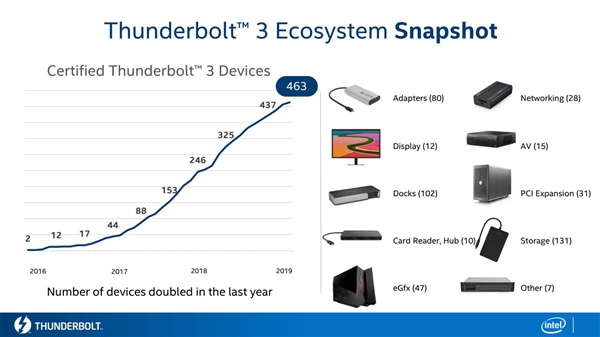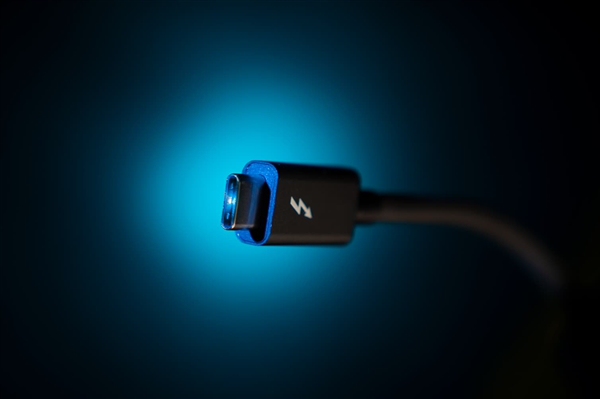Official declaration of USB 4 standard: Fully Integrating Thunderbolt 3
The standard organization USB-IF recently has brewed a new plan to rename USB 3.0/3.1 as USB 3.2. USB 3.0 is renamed as USB 3.2 Gen 1 (5Gbps), while USB 3.1 is renamed as USB 3.2 Gen 2 (10Gbps). In addition, USB 3.2 changes its name to USB 3.2 Gen 2x2 (20Gbps).
Unexpectedly, USB-IF officially announced USB 4 today. Notably, it’s not USB 4.0 but USB 4. It’s similar to what Bluetooth 5 or Android 9 Pie was called when it was introduced, although it is customary to add the ".0" suffix later on.
In terms of transmission rate, USB 4 is faster twice than USB 3.2, reaching 40Gbps (dual channel).

Is it a little familiar? Yes, Intel Thunderbolt 3 interface can reache the transmission rate of 40Gbps, and the earliest applications can be traced back to 2015.
Simply put, USB 4 makes Thunderbolt 3 popularize. After all, Intel has announced that it is open to the public without licensing fees. From 10nm Ice Lake, Intel integrates its processor with Thunderblot 3 . Of course, USB 4 is much more open than Thunderblot 3. Using Thunderblot 3 must be strictly certified by Intel, resulting in only 463 certified Thunderblot 3 devices.

As for other parameters, USB 4 can provide up to 100W power to support an external graphics cards, two 4K displays or a single 5K display.
In addition, unlike USB 3.0/3.1/3.2 which use color interface to distinguish generations, USB 4 does not have this requirement and recommends the use of Type-C media.
The current version of USB 4 standard is still being revised and is expected to be released to the public in the second half of this year, so it will take another year for large-scale application.

